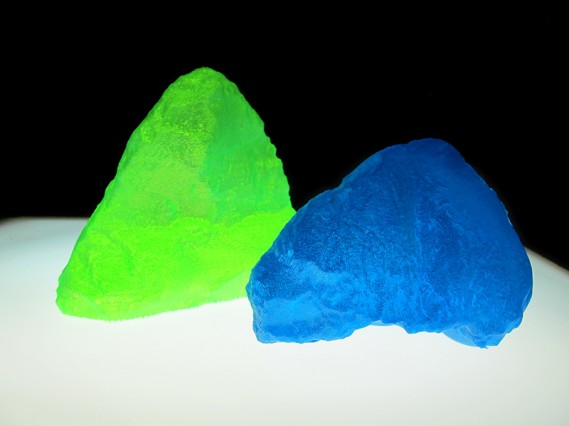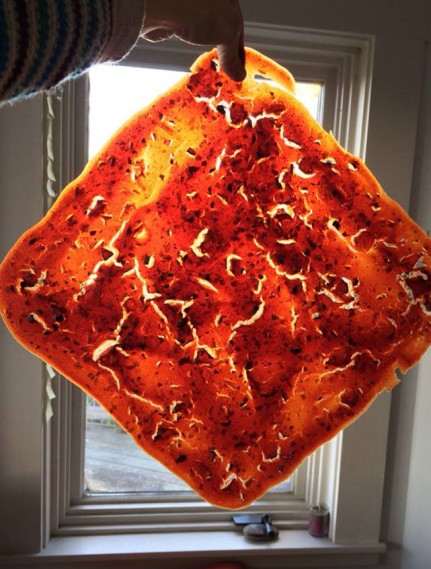Susan Robb’s "Wild Times" Explores Wildness as a Geographic Ideal and a State of Mind

On April 17, Susan Robb will embark on a five-month adventure from Mexico to Canada on the Pacific Crest Trail. This marks the culmination of her Creative Capital Project, Wild Times, which merges new media, social engagement and a 2,650-mile hike to explore wildness as a geographic ideal and a state of mind. I connected with Susan to learn more about this project and her preparations for the trek.
Jenny Gill: Wild Times centers around the importance of untouched wilderness and the notion of “wildness” as an antidote to the stress and structure of modern life. You live in a major city (Seattle). Do you struggle to stay connected to the wild in your day-to-day life?
Susan Robb: The “wild” I’m most interested in is the internal space, the interior dialogue, the autonomous sense of self. In the same way that geographic wild spaces are endangered, I believe the internal, personal ones are endangered as well. A person can feel the struggle and stress of modern life regardless of whether they live in a city or not.
I think it’s formed by the cultural pressure we face to be constantly broadcasting, Snapchatting, Facebooking, tweeting etc… With this constant outward flow comes the danger of shaping one’s life in a way so that it is “liked” by others. Our lives become a mechanism for the social media tool, as opposed to allowing personal growth unhindered by that kind of extreme pressure of approval.
Up to this point in the project it’s been lots and lots of administration. It’s hard to feel free when I’m sitting behind a computer all day sending and responding to emails.
VIDEO: Susan Robb presenting “Wild Times” at the 2013 Creative Capital Artist Retreat
Jenny: As I understand it, you’ll primarily be hiking solo, but collaboration is an important part of this project. Can you talk about the partnerships you’ve forged with arts institutions and other artists?
Susan: During the years I spent planning Wild Times, I researched far reaching topics relating to “wild”—the contradictory ideas of wilderness that play out for Americans, wilderness depicted in painting, the adoption of the term “wilding” as a lever used to convict black teens of the Central Park rape in New York in the ’80s.
I envision my work as forming a constellation of thoughts around a theme. Bringing together fellow artists, a number of institutions and the public is a way to continue that research. The institutions—Grand Central Art Center, Palm Springs Art Museum, 826 Valencia, Tacoma Art Museum, The Frye Museum, and the Henry Art Gallery—will be receiving my “transmissions” (the work I make and transmit as I hike) and/or offering a series of satellite programming I created for the public to participate in, like a “hero’s journey” writing workshop, group therapy explorations, improv comedy situationist dérives and a “trail magic” master class.
Jenny: It’s interesting to me that Wild Times is about connecting to the wild, but it’s not about going completely off the grid. You’ll be relying on your cell phone and other technology to transmit the digital artworks you create on the trail to your host venues.
Susan: A lot of my work uses this kind of tension: I’m addressing a problem and using the very thing that is at issue in the work to point to itself. I’m definitely not suggesting we cut our ties with technology in general or social media specifically. I think we can do a better job of questioning the space technology occupies in our life, a better job of questioning the motives of companies that create the technology we use.
A lot of the work I create in Wild Times will be emergent—conceived of as I hike—but I have a few things I know ahead of time. I will be using my phone to create 3D models of rocks I “collect” as I hike. I’ll then “beam” these back to the institutions hosting Wild Times exhibitions, where they will be printed, in colors coded to the elevations where I find them, on MakerBot Replicators 2 3D printers. Over the course of the project they will form a cumulative installation—a rock pile the size of my hike. I’ll also be creating photographic and video work that will be printed and projected at the venues.
Jenny: You’ve been working for months to prepare and dehydrate food for your five-month excursion. Can you describe some of those preparations? Any favorite recipes or tricks you can share?
Susan: I have been cooking for the trek throughout the past four months. I basically just make the foods I like, being careful to exclude oil and dairy—those don’t dehydrate well. I then spread the food out on the drying racks of a food dehydrator (I use the Excalibur brand) and wait. With food like tomato sauce, which basically forms fruit leather, I can just rip it into one meal strips, add cooked and dehydrated pasta and pack it in Ziplock baggies into single-portion sized meals. Other times, like with mash potatoes, I need to grind it up in the food processor after it’s been dehydrated so that it will rehydrate properly.
I’ve submitted almost everything to the dehydrator—including takeout. My greatest discovery is injera chips! I love Ethiopian food. Down the street from my house is the best Ethiopian restaurant called Tagla. The woman who owns the restaurant is a spice master. When I’m hiking in the Sierras eating Tagla’s Key Wat I’m going to be in heaven!
Another dish that I’ll be especially excited about is pesto pasta. I dehydrated basil, garlic and Parmesean (hard cheese is okay to use). I have .5 oz foil packets of olive oil that I’ll bring along. On the trail I’ll rehydrate the basil mixture and add the oil. People talk about diets of Top Ramen and Pop Tarts on the trail, but for me I think all the food prep will be worth it.
Jenny: California is in the midst of one of the most severe droughts in recorded history. Will this complicate your trip at all?
Susan: It’s just going to make my pack really, really, really heavy. And because the winter was so mild, the bears weren’t hibernating. I’m not sure how that’s going to play out. Hopefully they are fat and happy and uninterested in thru-hikers’ rations.
Jenny: Not something most artists have to consider in planning their projects! After you complete the hike and return to Seattle in the fall, what’s next for you?
Susan: I’ll be giving a TEDx talk about Wild Times in Indianapolis in late October and am currently talking with Loyola Marymount about working with them on their upcoming fall exhibition entitled Following the Prescribed Path. I’ll have the task of contemplating five months worth of adventure and all the ideas that generates. And, we’ll see how it goes, but I do have some ideas for another thru-hiking project…
You can follow Susan Robb’s hike through the “Wild Times” project website, or see her transmissions at one of the host venues: Grand Central Art Center in Santa Ana, CA; Palm Springs Art Museum in Palm Desert, CA; 826 Valencia in San Francisco, CA; Tacoma Art Museum in Tacoma, WA; and the Frye Art Museum and Henry Art Gallery, in Seattle, WA.


